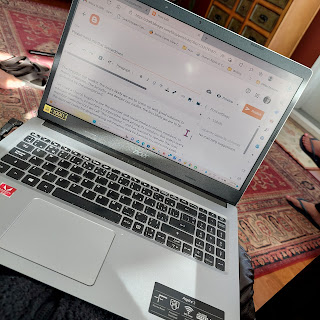naked man seated on a toilet
 |
| Complementing the colour blue. |
 |
| Community of communities |
“God
saw all that he had made,
and
it was very good.
And
there was evening, and there was morning—the
sixth day.” Genesis 1:31
I
picture a man (likely not Moses) holding a quill and writing Hebrew
words onto a papyrus scroll some 2700 years ago, words that would
forever be preserved as sacred writing, translated and transliterated
until I, today, experience the writer’s thoughts transferred from his
brain to mine through the reading of it. I picture other men
choosing among volumes and volumes of writing those that are worthy
of preservation, and discarding those that are not until a package of
writings we now know as The Bible is declared the completed
word.
That
both the writers and the preservers were inspired goes without
saying; a person picking up a quill and setting out on the laborious
task of interpreting our world never does so without inspiration.
It’s not unlike the sculptor who visualizes an object of beauty and
then spends hours and hours of strenuous labour to create a
representation of this inspiration that can be shared, preserved for
all time. All that is beautiful, all that lifts humankind onto a
higher plane, all that illuminates begins with an artist’s
inspiration.
And
yet, the most graceful, most balanced, most eloquent piece of art or
the most insightful, poetically spoken/written metaphor leaves many
cold, un-understanding, disinterested. Inspired work is created,
realized and preserved through a language, and if the
language of the sculptor’s art is not taught and understood, then
Rodin’s The
Thinker
may never be more to the observing eye than a naked man seated on a
toilet, or worse yet, a big block of brass.
It’s
been said often: all art is a collaboration between the artist and
the beholder. But this collaboration breaks down where no common
language exists. I began this short essay with reference to the
Genesis analogy of origins, an amazingly beautiful and inspired work
of art that for some remains forever stuck at the level of “a naked
man seated on a toilet” because insufficient attention has been
paid to the language of verbal/written art employed by the artist,
an artist equipped those many years ago with nothing but a quill,
some ink, some papyrus . . . but a bountiful supply of inspiration.
It
would help all of us to get at the minds of the inspired writers of
The
Bible
to see their work through the eyes of story, of parable, of allegory
because these were their language, the language through which
inspiration was recorded and collected for us. Like an extended parable, it has a theme and this may be it: there exists a place of sublime beauty
that humankind is capable of appreciating and enhancing . . . or
destroying. In Genesis, this place is visualized as a garden of
earthly delights but as the parable winds on, every absurdity mankind
can devise to destroy it and every impulse he is capable of that
might retrieve it is modeled in story.
Rodin’s
sculpture comes alive as we walk around it, view it from new angles.
It’s time we learned and taught the language of both Rodin and the
inspired Genesis penman. Time we took a walk around The
Bible, let
it speak to us in new ways.





Amen. Thanks for sharing - AN
ReplyDelete